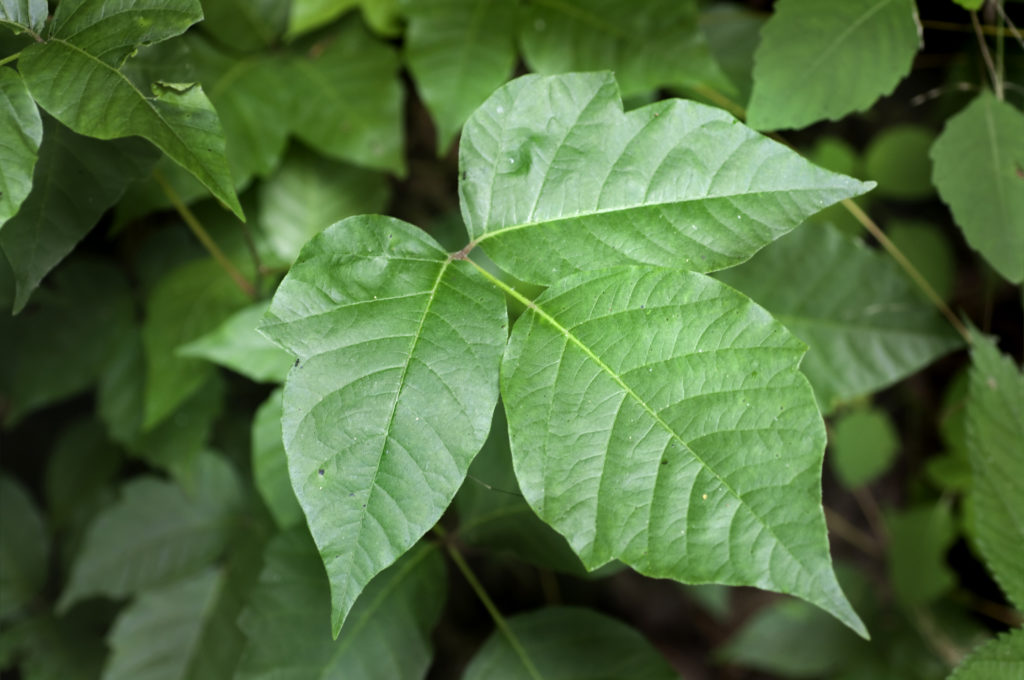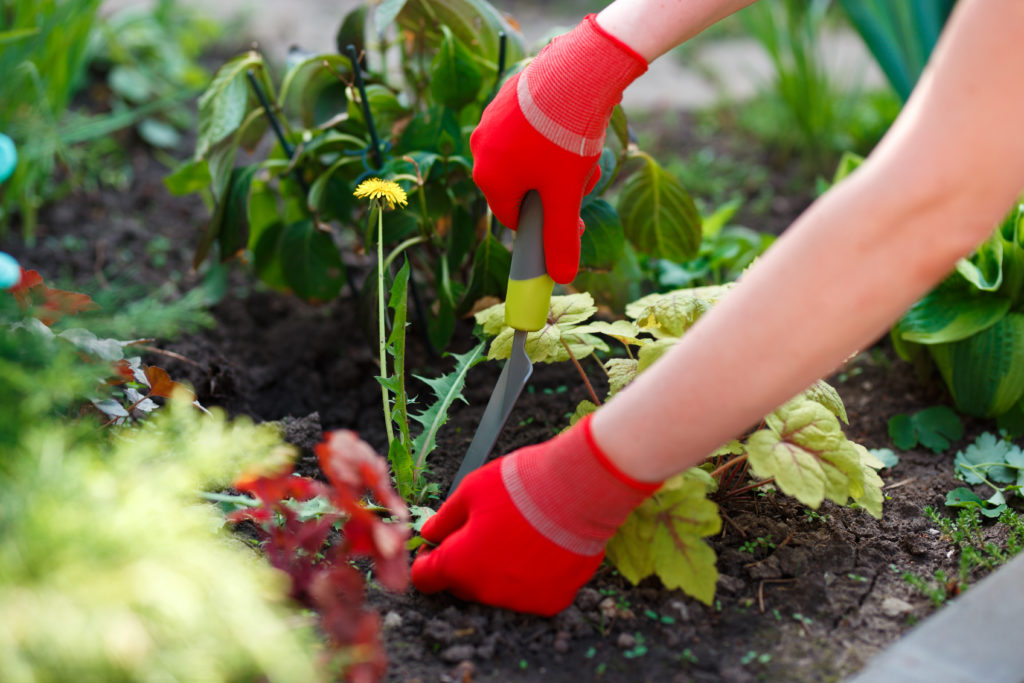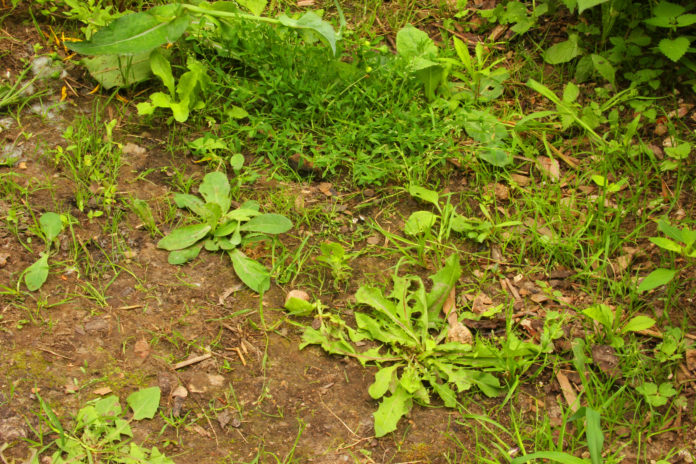Your garden has been planted with new annuals. Perennials are starting to fill in more and more everyday. Fresh mulch has been spread around the plants to make your garden look incredibly well dressed. You’ve been watering diligently as the weather heats up. And then they start invading. No, not the Brood X cicadas…at least not yet. We are talking about…
WEEDS!
Where do all of these volunteer plants come from? Who told them it was okay to grow in your manicured garden? Why do they insist on settling in where you didn’t intend them to grow? Why do weeds grow in places so seemingly inhospitable as cracks in cement? Why is the battle of keeping weeds out of your green grassy lawn unending?
Maybe these are existential questions with no easy answers. On the other hand, maybe a weed is just a weed, and must be dealt with accordingly.
We’ve noticed in our own garden beds that every year we have some volunteer plants that are remnants from the previous year’s annuals. Plants that flowered and then dropped seeds at the end of the season and then waited patiently all year to re-emerge. If left unpicked, sometimes these volunteer plants end up stronger and more beautiful than the new seedlings we buy from the store. Leaving them adds intrigue and interest to your garden.
Other weeds, however, are unwelcome gifts of the wind and birds and other creatures who roam your property and leave their seed filled droppings in your garden, driveway cracks, and lawn when you aren’t looking.
What are some of these common weeds? What can you do to control them?
We’re glad you asked! While people smarter than us have compiled more complete and detailed lists of weeks common to the tristate, we did want to highlight a few and then give you a few options for controlling them.
Broadleaf Weeds
Clover: Rabbits love it. Cows love it. Children love to hunt for 4-leafed clovers. But it can grow almost anywhere and can very quickly get out of control. It thrives if your soil has too much potassium in it. Like some other weeds, there are various types of clover.
Dandelions: Little kids love them: first the yellow flowers and then the fuzz balls that we all grew up blowing to make a wish, innocently spreading the seeds far and yon to create more yellow flowers. Truthfully, dandelion greens can also make for delicious eating. However, most people do not want these pervasive species decorating their lawns or gardens. Their tap root can be LONG and deep and hard to completely remove. For best results, dig these bad boys up by hand. Or use a strong herbicide to fully murder them.
Ground Ivy: Also known as Creeping Charlie. Ground Ivy is incredibly invasive and hard to control. It is a stubborn perennial weed with a vining habit that can take over large areas of a lawn.
Henbit and purple deadnettle: Truth be told, this one can be quite visually appealing in the spring when fields full of it show off its purple flower. But don’t let it fool you. These weeds are related to the mint family of plants and spread like wildfire.

Poison ivy: This grows like crazy down here in Southern Indiana. It is rare that you can walk through the woods and not see this on the edge of trails. You’ve undoubtedly heard the adage “Leaves of three, let it be,” but lots of weeds could fall into this category. Memorize what poison ivy looks like and then never ever touch it. Removal of poison ivy must be done by as brutal means necessary and is famously hard to get rid of, so persistent and repetition are in order. Do not BURN poison ivy and ALWAYS wash all clothes and bathe immediately after working around it.
Pokeweed: This weed is ridiculous. If you experiment and let this grow, this red-stemmed weed gets up to 10 feet high and produces a distinct purple berry that eventually flowers into while blossoms. All parts of the plant are poisonous to humans and other animals, so just get rid of it at first sight.
Spurge: It’s a great word, but we hate this stuff and it LOVES our garden beds. You’ve seen it: red stems with tiny green leaves…it creeps close to the ground and can grow anywhere, even in cracks in your driveway and it is hard to grab hold off and pull off at the anchor stem. You can pull these out by hand and you will want to, as a single plant can produce over 1000 seeds, leading to more problems down the road.
Wild violets: These thrive in shady areas, and fool you because honestly, they are cute. Who would want to destroy them? But if left unchecked, they will take over the shady parts of your yard and soon you will have no grass growing at all beneath your trees.
Grassy Weeds
Bermuda grass: spreads through rhizomes and turns brown in cool weather. Extremely difficult to pull up as it creates a mat. Often confused with crabgrass.

Crabgrass: this stuff can start in the lawn and very quickly work its way into other beds. Crabgrass grows in clumps and seems to pop up when lawns are mowed too short, allowing more light into the underlayer.
Foxtail: Like the name suggests, this grass produces a fuzzy little tail that makes it easy to identify. There are various types of foxtail grass and it all grows in clumps, similar to crabgrass.
Weed Control
Weed control falls into preventing weeds in the first place and then various means by which to remove weeds. Depending on where your weeds are, you might use different options for mitigating them.
Prevention
Inhibiting weed grown before it starts is the best way to win the war on weeds. This can be done with a combination of the following techniques:
Landscaping cloth: It is a project to put down. And, whenever you want to plant anything, you have to cut through it in order to dig a hole, but it really does help block weed growth.
Mulch: Using enough mulch is also an important step in your garden beds to slow down weed invasions
Preen: Use a weed preventative, like preen granules, after your plants are established, to inhibit weed growth.
Tight plantings: You can also plant ground cover: crowd those weeds out by packing in plants. Likewise in lawns, the healthier your turf is and the thicker the grass, the harder it is for weeds to invade.
Removal
Mechanical
Don’t we all have memories of forced family fun, pulling weeds together on a summer evening? Let’s keep this tradition going. Pulling weeds is a great way to get your kids outside and introduced to the joys of gardening. We aren’t saying a little incentive (ahem…blackmail) might not be needed, but it is amazing what kids will do for a nickel a weed…or a simple outing to the local ice cream parlor or shaved ice stand.
Pull weeds up by hand when they are still small and their roots aren’t too established. Just picking a few weeds everyday prevents your beds from being overwhelmed by them. For larger weeds, or ones with deeper roots such as dandelions and thistles, you will want to use a tool to help dig them out fully so they won’t grow back.

Consider pulling weeds when the ground is wet, as it will be easier to remove the whole plant and its root system.
For the fire obsessed and more adventurous people out there who need more drama in their lives, another mechanical method of killing weeds is with a flame torch. Various tools are on the market that operate by means of a small propane tank that fuels a hot flame at the tip of the tool. By scorching weeds with the flame, you effectively kill it, right down to the roots. You will need to be careful, however, since the flame will also kill any grass or other plants it touches. Some homeowners practice a similar technique using boiling water. DO NOT BURN POISON IVY. And please, be excruciatingly careful if you decide to go down this road.
Home remedies: to be used with a sprayer, and as with more commercial preparations, keep even these home remedies away from other plants, because they can’t discriminate between weeds and non-weeds.
Create a concoction of 1 gallon vinegar, 1 cup salt and 1 Tablespoon soap. Non-selective weed killer. Spray on invading species.
Ultra Dawn dish soap (4 ounces) mixed with one gallon water. Spray on invading weeds.
Borax and Water: Creeping Charlie (see Ground Ivy above) can be controlled using a mixture of water and ordinary household borax. Mix 10 ounces of borax with 4 ounces (½ cup) of warm water into a slurry; then dilute this into 2 1/2 gallons of water. Apply with a sprayer to the affected areas. This solution can also kill garden plants, so be careful as you spray it and don’t use it too frequently as it may cause permanent damage to the ground beneath.
Rubbing Alcohol Solution: Alcohol is notorious for its drying properties, so when it is applied to weeds, it effectively kills the plant by drying it out. Dilute 2 tablespoons of rubbing alcohol with one quart of water, in a spray bottle for ease of use. Adjust for larger preparations, but keep proportions the same. Apply on a sunny day, and spray directly onto the weeds, again being careful to keep it away from other plants.
Boiling Water: This homemade weed killer is the easiest and most organic of all to prepare and use. You can apply it at absolutely any time you wish: day or night, with or without sunshine, even in the pouring rain. Simply boil some water, and pour it on the leaves of the targeted weed. Pour enough so that it seeps down into the roots, too. It’s helpful to have a kettle to boil the water so that, when you pour the stream of boiling water, it can be carefully directed with a spout. Scalding a desirable plant with boiling water may kill it. This is a great way to reuse the leftover hot water used to steam vegetables.
Chemical
Selective herbicides: You can visit your local garden store and find any number of products that are marketed to kill all weeds or a specific type of weed. Store and use these products with much caution, however, as they are highly highly toxic to humans and animals.
Just a few additional words about lawn care and weed prevention:
As in the garden bed technique in which you fill the garden with plants you WANT there to prevent too much space for weeds to emerge, the same technique can be used with lawns: Make sure your lawn is as thick as possible with the grass variety you WANT to be there. The lusher your lawn, the harder it is for weeds to establish themselves. Aerate and overseed once a year to maintain a healthy lawn and help it recover from seasonal stressors.
Feed lawn regularly
Mow high enough for the grass to thrive and remain as healthy as possible and give weeds less chance to infiltrate and get light.
The most efficient way to have a healthy lawn and control weeds from infiltrating is to outsource this chore to an expert. There are any number of good quality lawncare contractors in our area who can treat your lawn on a regular basis to address its specific needs. Call your favorite F.C. Tucker Emge REALTOR® to get recommendations of their favorite lawncare professionals.
One of our favorite sources for all things botanical in Indiana is the Purdue Extension Service. In this case, their Master Gardener Guide to Common Lawn and Garden Weeds is a an excellent reference and contains pictures for visual identification:




